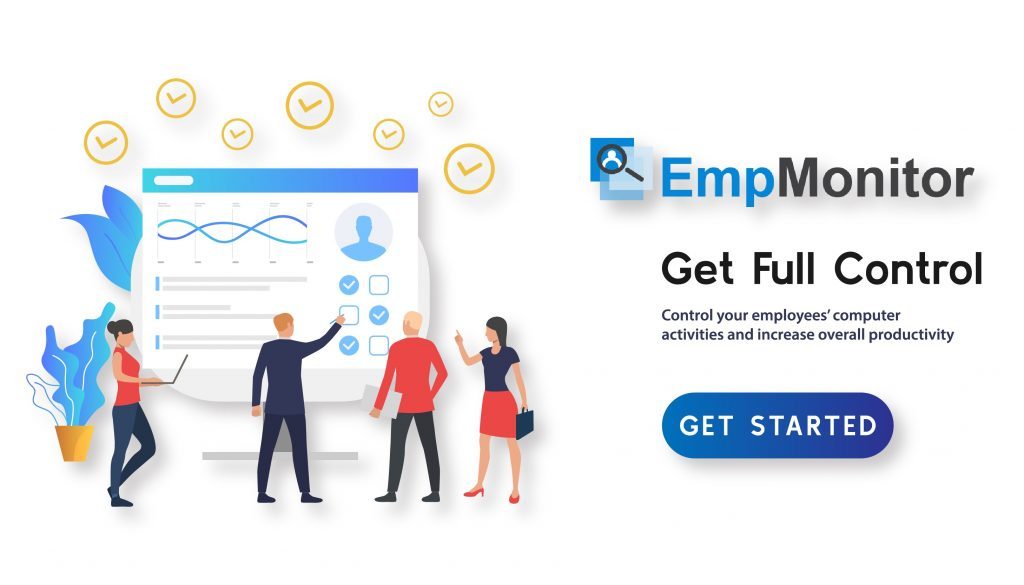Nowadays, one question that often leaves both employees and employers uncertain is: how many hours is full time? While it may seem straightforward at first, the answer is more nuanced. With the rise of remote work, flexible schedules, freelance gigs, and the gig economy, the lines between full-time, part-time, and temporary roles have become increasingly blurred.
As the way we work continues to evolve, understanding how many hours is full time has never been more important. Whether you’re clocking in at an office or logging on from your home desk, understanding how your hours are defined can make a significant difference, especially when it comes to receiving fair pay, qualifying for benefits, and maintaining a healthy work-life balance.
In this guide, we’ll dive into what how many hours is full time means across different industries and countries. We’ll also share practical tips to help you manage your time effectively and avoid burnout, no matter where or how you work.
In a hurry ? listen to this podcast now !!
What Does Full Time Mean?

At its core, full-time employment usually means working a set number of hours each week, often with added benefits like health insurance, paid time off, and retirement contributions. But when it comes to answering the question how many hours is full time, the reality isn’t as clear-cut as you might think.
Traditionally, full-time work has been defined as around 40 hours per week, typically eight hours a day, five days a week. However, that standard isn’t universal. In some industries and companies, full-time may mean 35 to 40 hours a week, while others consider as few as 30–32 hours to qualify, especially in roles that prioritize flexibility and work-life balance.
Since there’s no single definition that applies everywhere, it’s important to understand how many hours is full time according to your employer or local labor laws. That clarity not only affects your paycheck but also your access to essential benefits and protections.
Also read –
A Complete Guide to Hiring and Managing Full Time Employees
How Many Work Hours In A Month: 2025 Edition
Why The Confusion Around Full Time?
So, why is there still so much confusion around how many hours is full time? The answer lies in varying laws, evolving work models, and shifting expectations. Let’s break it down:
1. Lack of A Universal Legal Definition
One of the biggest reasons for confusion is that legal definitions of full-time work vary significantly from one country to another. This makes answering how many hours is full time more complicated than it seems.
- In The United States, the Fair Labor Standards Act (FLSA) doesn’t define full-time or part-time employment, leaving it up to individual employers. However, under the Affordable Care Act (ACA), employees working 30 hours or more per week (or 130 hours per month) are classified as full-time for health insurance purposes.
- In The United Kingdom, full-time employees typically work 35 to 40 hours per week, though this can vary by contract.
- In France, the legal full-time workweek is 35 hours, a standard set by labor laws designed to support better work-life balance.
- In Australia, full-time work is commonly considered to be 38 hours per week, although contracts or award systems may outline additional hours.
This wide range of definitions creates a lot of uncertainty, especially for international workers, freelancers, or remote employees who collaborate with companies in multiple countries and all wondering the same thing: how many hours is full time?
2. Flexible And Remote Work Models
The rise of remote work, flexible schedules, and gig-based jobs has made it even harder to pinpoint exactly how many hours is full time in today’s workforce.
For instance:
- A remote software developer might work 32 hours a week and still be treated as full-time.
- A startup could offer a four-day workweek totaling 36 hours and still provide full-time benefits.
- A freelancer juggling multiple clients might clock over 40 hours a week in total, yet not have full-time status with any single company.
As work continues to shift away from traditional models, our definition of full time employees must adapt too because full-time isn’t always about the number of hours worked, but about how those hours fit into the structure of a job and the benefits that come with it.
How Many Hours A Week Is Full Time?
This is one of the most common variations of the question: how many hours a week is full time? While the U.S. Bureau of Labor Statistics reports that the average full-time employee works around 40 hours a week, many companies use their own internal policies to define it.
Retail and hospitality industries might set full-time at 30 hours per week, while tech firms may expect upwards of 45 hours. It’s essential to consult your contract or employee handbook to determine what full-time means in your specific role.
How Many Hours Is Considered Full Time?
Now let’s tackle another common variation: how many hours is considered full time? The answer depends on your location and employer guidelines.
In Canada, full-time work typically follows standard weekly hours, while in Australia, it’s based on national norms. While there’s no universal definition, if you’re working most of the workweek consistently, it’s generally considered full-time.
Some roles may offer flexibility, where slightly fewer hours still count as full-time, especially in industries focused on work-life balance. Ultimately, it’s about more than just hours; your role’s structure and the benefits it provides matter too.
How Many Hours Is A Full Time Job?
You might still be wondering: how many hours is a full time job really? The answer depends on the nature of your job and where you are located.
In many corporate settings, a full-time job typically requires 8-hour workdays, five days a week, totaling 40 hours. However, some industries like healthcare, law, or finance may demand longer hours. Remote and hybrid jobs might also offer different schedules but still categorize the roles as full time.
It’s crucial to understand your specific job expectations to know if you’re meeting full-time requirements.
What Are The Benefits of Knowing How Many Hours Is Full Time?

Understanding how many hours is full time isn’t just a small detail it can directly impact your career, your pay check, and your peace of mind. Here’s why it matters to you:
1. Offering Access To Essential Benefits
As an employer, providing health insurance, paid time off, and retirement contributions is often tied to full-time status. Ensuring clarity on employee hours helps you offer valuable benefits that support their health, well-being, and long-term security, fostering a more committed and productive workforce.
2. Greater Job Stability
Full-time roles usually come with more security. A steady paycheck and consistent hours make it easier to manage your budget, plan, and feel more confident in your day-to-day life.
3. Better Tax Planning
How many hours you work influences your income and may even affect your tax bracket. Knowing your full-time status can help you plan smarter, avoid surprises during tax season, and make more informed financial decisions.
4. More Room For Growth
Employers are more likely to invest in full-time team members, offering training, promotions, and leadership opportunities. If you’re looking to grow your career, having clarity on your employment status can open important doors.
At the end of the day, understanding how many hours is full time helps you take charge of your benefits, finances, and long-term goals. It’s about making sure your work is recognized and rewarded fairly.
What Are The Common Myths About Full-Time Work Hours?
When you’re trying to plan your career or simply figure out your work-life balance, it’s easy to get caught up in the many myths surrounding full-time employment. These misconceptions can make it harder to understand your rights, benefits, and expectations. Let’s clear a few things up from an employee’s point of view:
Myth 1: Full-Time Always Means 40 Hours a Week
Not necessarily! While 40 hours is often seen as the standard, many companies consider 30 to 40 hours as full-time. In some industries, like tech or creative roles, even 32 hours a week may qualify. That’s why it’s so important to understand how many hours is full time according to your employer or contract.
Myth 2: Part-Time Employees Don’t Get Benefits
This isn’t always true. While full-time roles generally come with more extensive benefits, some companies do offer part-time employees perks like paid leave, retirement plans, or even health insurance. Don’t hesitate to ask knowing how many hours is full time can help you gauge where you stand in terms of eligibility.
Myth 3: More Hours Automatically Mean More Pay
It might seem logical, but it doesn’t always work that way. If you’re salaried, working extra hours might not come with overtime pay. Even in hourly roles, employers can have caps or specific overtime rules. That’s why understanding your status and how many hours is full time matters it can directly affect your paycheck and how your time is valued.
Knowing the truth behind these common myths helps you advocate for yourself, make informed job decisions, and avoid surprises when it comes to your pay or benefits. In today’s fast-changing workplace, having clarity on how many hours is full time gives you the power to take control of your work life.
What Is The Full Time Hours Around the World?
The number of hours that count as full-time work can vary quite a bit depending on where you are in the world. Here’s a snapshot of how different countries define full-time employment:
- Germany: Full-time work typically means about 35 hours a week, with a strong emphasis on work-life balance.
- Japan: Officially, full-time is around 40 hours, but in practice, it’s not unusual for employees to work much longer hours due to cultural norms.
- France: Legally defined as 35 hours per week, France prioritizes reduced working hours to improve the quality of life.
- India: Here, full-time work typically means 48 hours per week (8 hours a day, six days a week) as per the Factories Act. However, it can vary by industry and company policies.
The Role Of Time Tracking And Management Tools
Understanding your work hours is one thing, but managing them effectively is another. Whether you’re an employer or an employee, knowing how many hours are full-time becomes more actionable when you utilize technology to track and manage time.
Time tracking software helps employees and managers monitor actual work hours in a month, in a year or in a day. This is especially useful for remote teams or businesses with hourly workers. It ensures that employees meet the threshold for full-time classification and helps companies stay compliant with labor laws.
EmpMonitor, a comprehensive workforce analytics tool, offers features like automated attendance tracking, real-time activity monitoring, and detailed work hour reports, making it easier for organizations to maintain accurate records and ensure full-time standards are met.
How EmpMonitor, A Time Management Software, Helps You In Managing Time?

When it comes to understanding how many hours is full time?, Knowing the number is just the beginning; how you manage those hours truly makes the difference. That’s where EmpMonitor comes in.
EmpMonitor is more than just a time tracking tool; it’s a complete productivity solution. It helps you make the most of your workday by offering detailed insights into active and idle time, application usage, and overall productivity patterns. Whether you’re a manager overseeing a team or an employee tracking your performance, EmpMonitor ensures you stay on top of your hours and use them effectively.
With EmpMonitor, you not only know how many hours is full time? you know exactly how those hours are being spent.
Key Features to Help You Understand and Manage How Many Hours Is Full Time-
1. Time Tracking
Time tracking helps verify if an employee meets full-time hour requirements (typically 30–40 hours/week). Features like detailed timesheets and productivity vs. idle time analysis ensure accountability and accurate performance assessments.
It also enables managers to identify time-wasting patterns and make informed decisions to boost efficiency. For employees, it provides clarity on how their time is spent. Over time, this builds a transparent and fair work environment. Tools like EmpMonitor make this process seamless with real-time, automated tracking.
2. User Activity Monitoring
User activity monitoring offers employers insights into employee work patterns, helping identify peak productivity and address workload imbalances. It ensures employees meet full-time hour expectations by tracking time and activities. Managers can access real-time data to confirm full-time status, while employees track their performance. The system integrates with existing tools for accurate tracking and provides data on active vs. idle time. Custom alerts notify managers of drops in productivity or insufficient hours, ensuring compliance and fair access to benefits, leading to a more productive workplace.
3. Attendance Monitoring
Efficient attendance tracking logs clock-ins, leaves, and absences with accuracy. A centralized dashboard offers clear insights into weekly work hours, supporting compliance and helping define consistent full-time engagement.
It ensures punctuality, encourages accountability, and reduces manual errors in attendance logs. Managers can easily verify working hour totals for payroll or HR decisions. With EmpMonitor’s integrated attendance tracking, everything from leave requests to shift data is managed effortlessly.
4. Time Tracker Tool
A time tracker tool is a practical solution for freelancers and small businesses. By clearly logging your working hours, you can demonstrate full-time equivalency when applying for secured loans, taxes, or health insurance. Something that becomes especially useful when you need to apply for a loan and must present reliable proof of income and working hours.
EmpMonitor’s intuitive dashboard and exportable reports simplify this process, making it easy to present accurate time logs for compliance or verification purposes.
With EmpMonitor, understanding how many hours is full time becomes easier, and managing those hours becomes smarter, more transparent, and more effective for everyone involved.
Conclusion
So, how many hours is full-time? While there’s no universal number, most definitions fall between 30 and 40 hours per week. Understanding what qualifies as full-time work helps you access benefits, maintain compliance, and better manage your career.
Whether you’re a seasoned professional or just starting, it’s crucial to know how your employer defines full-time and to understand how many hours is full time? With the help of modern tools like EmpMonitor, a powerful time tracking and productivity management software, you can ensure that you stay on top of your hours and performance. By combining features of time tracking software, time management tools, and a reliable time tracker, EmpMonitor helps you make every hour count.
Faqs
1. Is 32 hours considered full-time?
Ans – Yes, in many organizations, 32 hours per week qualifies as full-time, especially if benefits are included. However, the definition can vary, so it’s important to check how your employer defines how many hours is full time within your specific role or contract.
2. Does full-time work always mean 9 to 5?
Ans – No, full-time work hours can vary by company. Some jobs offer flexible or staggered hours that still meet the criteria for full-time. The key is understanding how many hours is full time according to your employer’s policy or local labor laws.
3. Can part-time employees get benefits?
Ans – In some cases, yes. Certain employers offer benefits to part-time workers, though it’s less common. Knowing how many hours is full time in your organization can help you understand where you stand in terms of eligibility.
4. Is overtime included in full-time hours?
Ans – No, overtime is additional work beyond full-time hours and is usually compensated separately. Once you understand how many hours is full time in your workplace, anything beyond that is typically considered overtime.

















